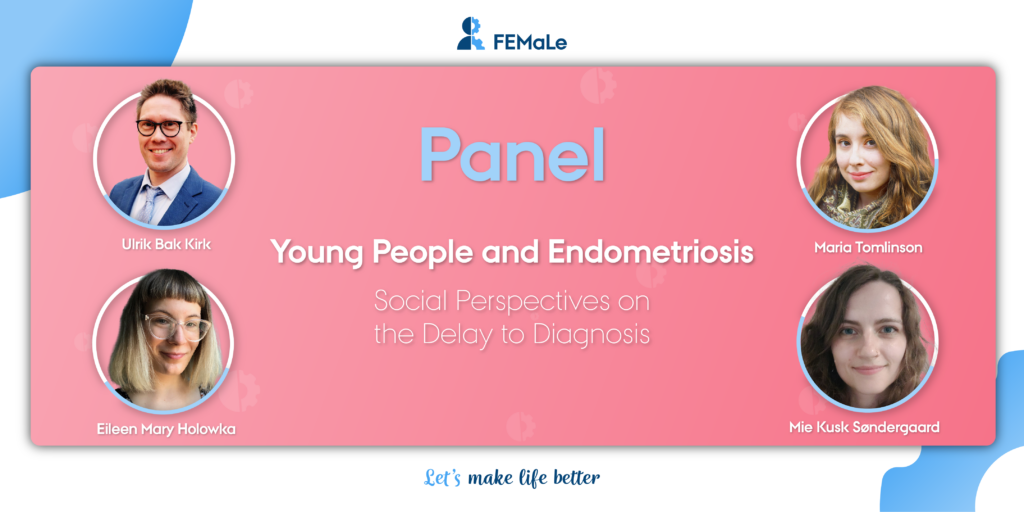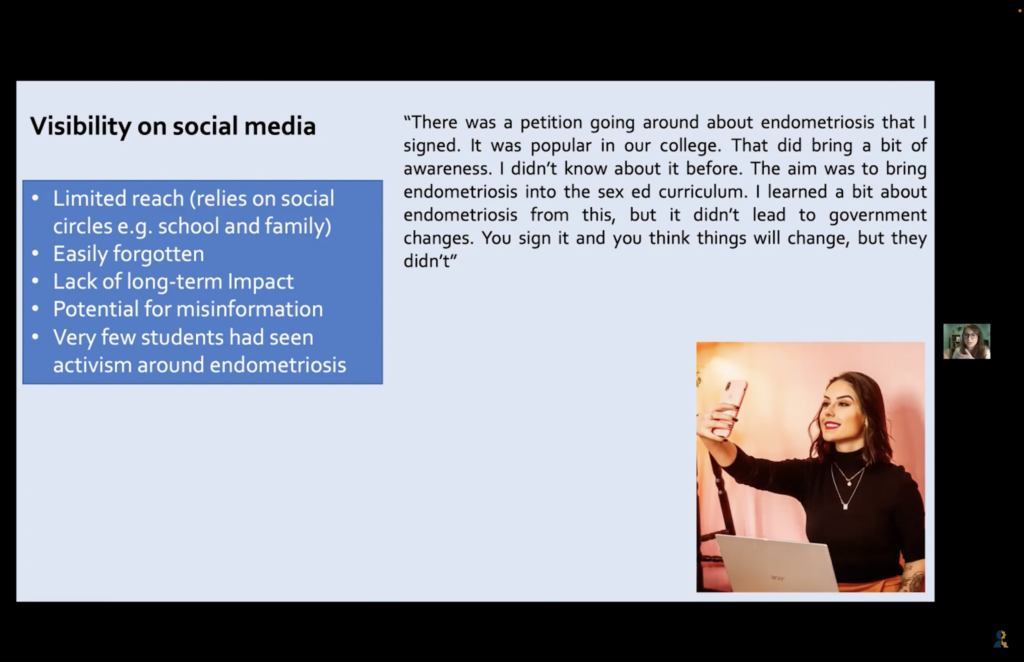FEMaLe project’s Coordinator Mr. Ulrik Bak Kirk, has been a part of the panel that brought together representatives from FEMaLe project and researchers from social sciences to discuss young people and endometriosis.

Speakers discussed the social reasons why young women and people are not accessing medical treatment and why they are facing a long wait for diagnosis. Topic included young people’s engagement with endometriosis on social media, their knowledge of the condition itself, and their views about pain.
In front of more than 70 attendees, the panel discussed the burning issues, with Mr. Bak Kirk presenting the FEMaLe project and how it came alive. Afterwards, the three scholars, Maria Tomlinson, Eileen Mary Holowka and Mie Kusk Søndergaard gave dimension on the social science.
Mr. Bak Kirk shed light to the fact that endometriosis has been largely ignored in the government policies and research funding globally. There have been some optimistic trends in the recent years, but largely the topic of endometriosis has been underprioritized, under funded and understudied. To fight this, he explained how they got the idea and applied for funding to the Horizon Europe programme, who eventually funded the Finding Endometriosis using Machine Learning project.
He also offered a short retrospect about the countries changing their national plans, like France, or the ones making the steps in the right direction, like Hungary, Scotland and Australia, and stated how it’s much needed, and how much the good news that is. He shortly added the social dimension to the panel, by touching upon the women’s social issues connected to the reproductive health, and health research overall.
Then, Mr. Bak Kirk turned to the tech part of the project, explaining how FEMaLe uses Artificial Intelligence, Machine Learning and Big Data to tackle the project’s topic such personalized early risk prediction, prevention and intervention, and how his realization that we can use the digital footprint to do something to reduce a very much delayed diagnosis sparked the conception of the project.
The idea is to tailor the various digital health services to personalize them, using a combination of many multi-omic datasets, which is exactly FEMaLe’s aim – to personalize the early risk prediction of endometriosis with an aim to ensure individualized intervention and to build knowledge for prognostic prevention, by identification of subtypes of endometriosis.

The project’s ambition is to develop a platform that will allow the conversion of the population datasets into a personalized predictive model, and to improve the continuum of care for women, or any patient, with endometriosis.
He then talked about the ways project invented to reduce time to diagnosis, and also how the training of the healthcare professionals, petitioners in particular, can help raise their awareness of the diagnosis opportunities.
Also, he explained how the project’s using state-of-the-art tools to help gynecologists and radiologists diagnose, ideally, non-invasively. Lastly, he turned to the improvement of treatment goals, and the opportunities that the project offers. One, to digitalize mindfulness intervention, as it’s proven quite effective in improving the quality of life in other contexts, and two, to train an algorithm, so that the surgeons can be guided visually while preparing surgeries and actually operating.
Explaining the interdisciplinarity and internationality of the project, he gave some numbers surrounding it about the funding, work packages, partners and the project’s course. He explained the core of the project comprised into 5 work packages, and turned to the accompanying work packages that support the core ones, by touching upon the project’s social media presence and success.
He concluded his presentation by reflecting on the impact, one of the pillars for the project’s action, as well as the promotion of the collaborative leadership, and the collaborative enthusiasm which was determined at the project’s kick-off as an action everyone is most excited for and thinks of as an important state to be in in order to successfully develop the project.
Mr. Bak Kirk then used the podium to introduce the social science speakers, which gave the social dimension to the discussion.
You can find each of the panelists’ presentations on our YouTube webinar playlist.